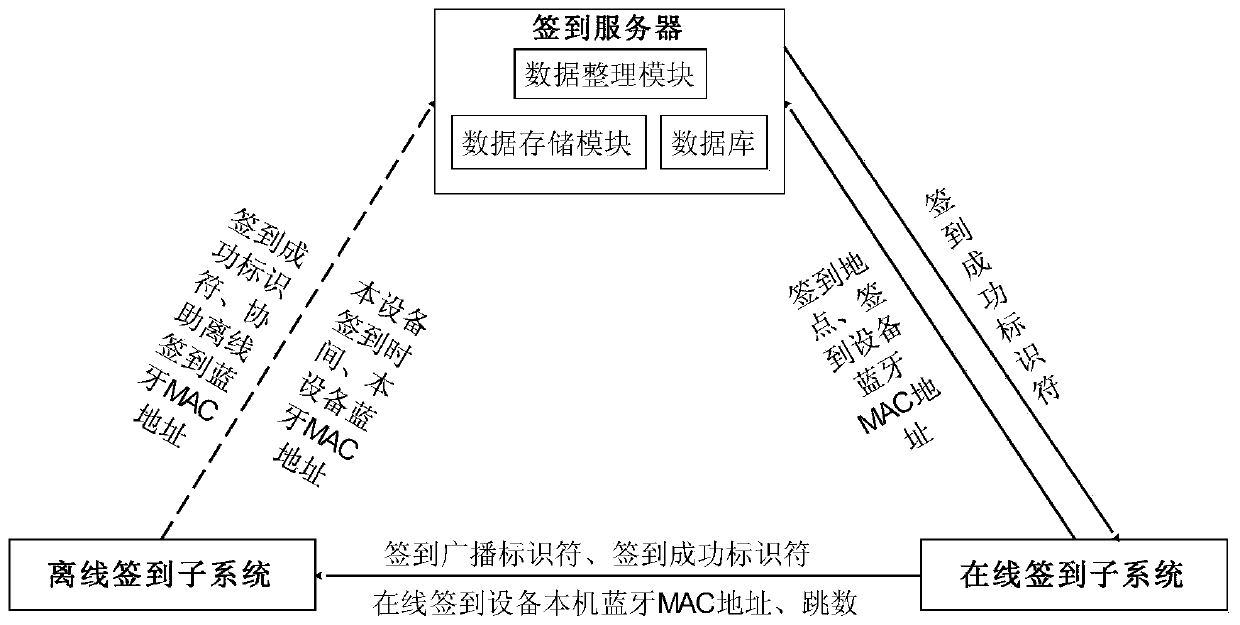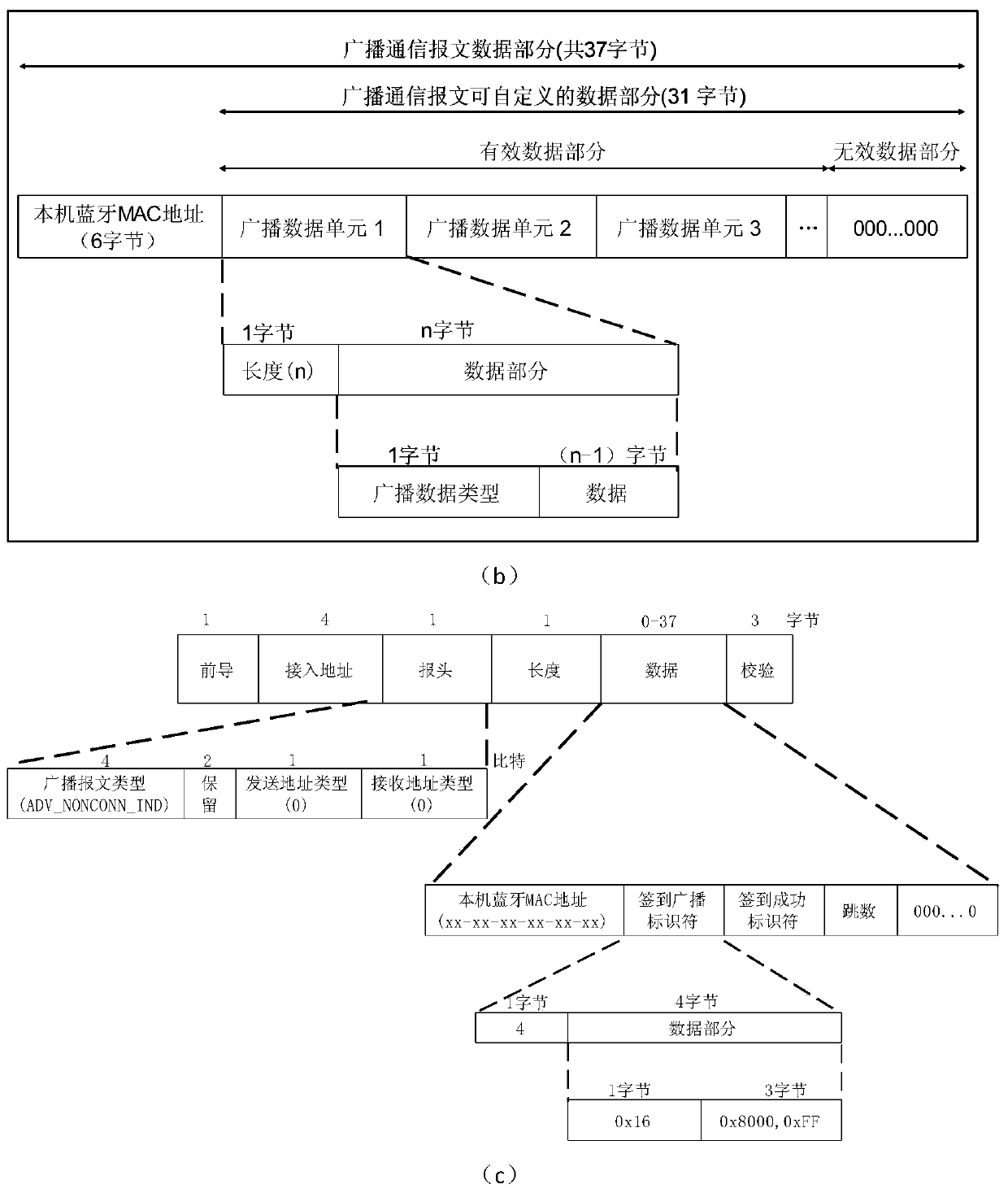Bluetooth sign-in method based on co-location
A co-location and bluetooth technology, which is applied in the directions of location-based services, recording/indicating event time, broadcast service distribution, etc. It can solve problems such as poor hardware adaptability, low equipment requirements, and easily damaged QR codes.
Active Publication Date: 2019-10-01
CENT SOUTH UNIV
View PDF4 Cites 0 Cited by
- Summary
- Abstract
- Description
- Claims
- Application Information
AI Technical Summary
Problems solved by technology
This Bluetooth check-in method needs to use a special LPC2138 controller, CSR Bluetooth module, LCD display and voice module, which has poor adaptability to hardware, and the signal coverage of a single Bluetooth device is limited. To cover a wider range, you need to deploy Multiple sets of special hardware devices for sign-in mentioned above
There are also some schools or companies that allow students or staff to scan designated QR codes at designated places to sign in. This solution is fast and accurate, and has low requirements for equipment. The disadvantage is that the QR code is easily damaged, and each student or staff who signs in needs to carry it with him or her. Internet-connected mobile phone
At present, there is no solution for using smart wearable devices with Bluetooth communication functions to achieve sign-in from publicly published materials.
Method used
the structure of the environmentally friendly knitted fabric provided by the present invention; figure 2 Flow chart of the yarn wrapping machine for environmentally friendly knitted fabrics and storage devices; image 3 Is the parameter map of the yarn covering machine
View moreImage
Smart Image Click on the blue labels to locate them in the text.
Smart ImageViewing Examples
Examples
Experimental program
Comparison scheme
Effect test
Embodiment Construction
the structure of the environmentally friendly knitted fabric provided by the present invention; figure 2 Flow chart of the yarn wrapping machine for environmentally friendly knitted fabrics and storage devices; image 3 Is the parameter map of the yarn covering machine
Login to view more PUM
 Login to view more
Login to view more Abstract
The present invention discloses a collaborative location-based Bluetooth check-in method. According to the method, the Bluetooth communication functions of smart wearable devices are utilized to determine relative positions so as to realize collaborative check-in. According to the technical schemes of the invention, a multi-Bluetooth device collaborative check-in system composed of an online check-in subsystem, an offline check-in subsystem and a check-in server is constructed; the online check-in subsystem performs the online check-in of a base location point device; offline devices perform offline check-in; and the check-in server performs data settlement, statistics and display. According to the method of the invention, the networking of the Bluetooth modules of the smart wearable devices is adopted to realize collaborative check-in; hardware devices for assisting check-in are not required to be deployed in a check-in area, so that requirements for hardware are decreased; the limitations of the signal coverage of a single Bluetooth module are eliminated; the coverage range of check-in can be extended; and check-in sites can be set more flexibly.
Description
technical field The invention relates to a positioning and sign-in method for intelligent wearable devices (such as mobile phones, wristbands, watches, etc., which can realize Bluetooth communication) using built-in low-power Bluetooth functions. Collaborative check-in method with precise location. Background technique In recent years, Internet of Things technology has received widespread attention. "Internet of Things" refers to the combination of various information sensing devices, such as radio frequency identification (RFID) devices, infrared sensors, global positioning systems, laser scanners and other devices, and the Internet. A huge network. Its purpose is to connect all items to the network, and the system can automatically and in real time identify, locate, track, monitor and trigger corresponding events for objects. The rapid development and application of "Internet of Things" technology has brought great convenience to people's life. Among them, the applica...
Claims
the structure of the environmentally friendly knitted fabric provided by the present invention; figure 2 Flow chart of the yarn wrapping machine for environmentally friendly knitted fabrics and storage devices; image 3 Is the parameter map of the yarn covering machine
Login to view more Application Information
Patent Timeline
 Login to view more
Login to view more Patent Type & Authority Patents(China)
IPC IPC(8): H04W4/80H04W4/02H04W4/06G07C1/10
Inventor 刘亚萍李少勇刘青青张硕廖海宁
Owner CENT SOUTH UNIV
Who we serve
- R&D Engineer
- R&D Manager
- IP Professional
Why Eureka
- Industry Leading Data Capabilities
- Powerful AI technology
- Patent DNA Extraction
Social media
Try Eureka
Browse by: Latest US Patents, China's latest patents, Technical Efficacy Thesaurus, Application Domain, Technology Topic.
© 2024 PatSnap. All rights reserved.Legal|Privacy policy|Modern Slavery Act Transparency Statement|Sitemap



